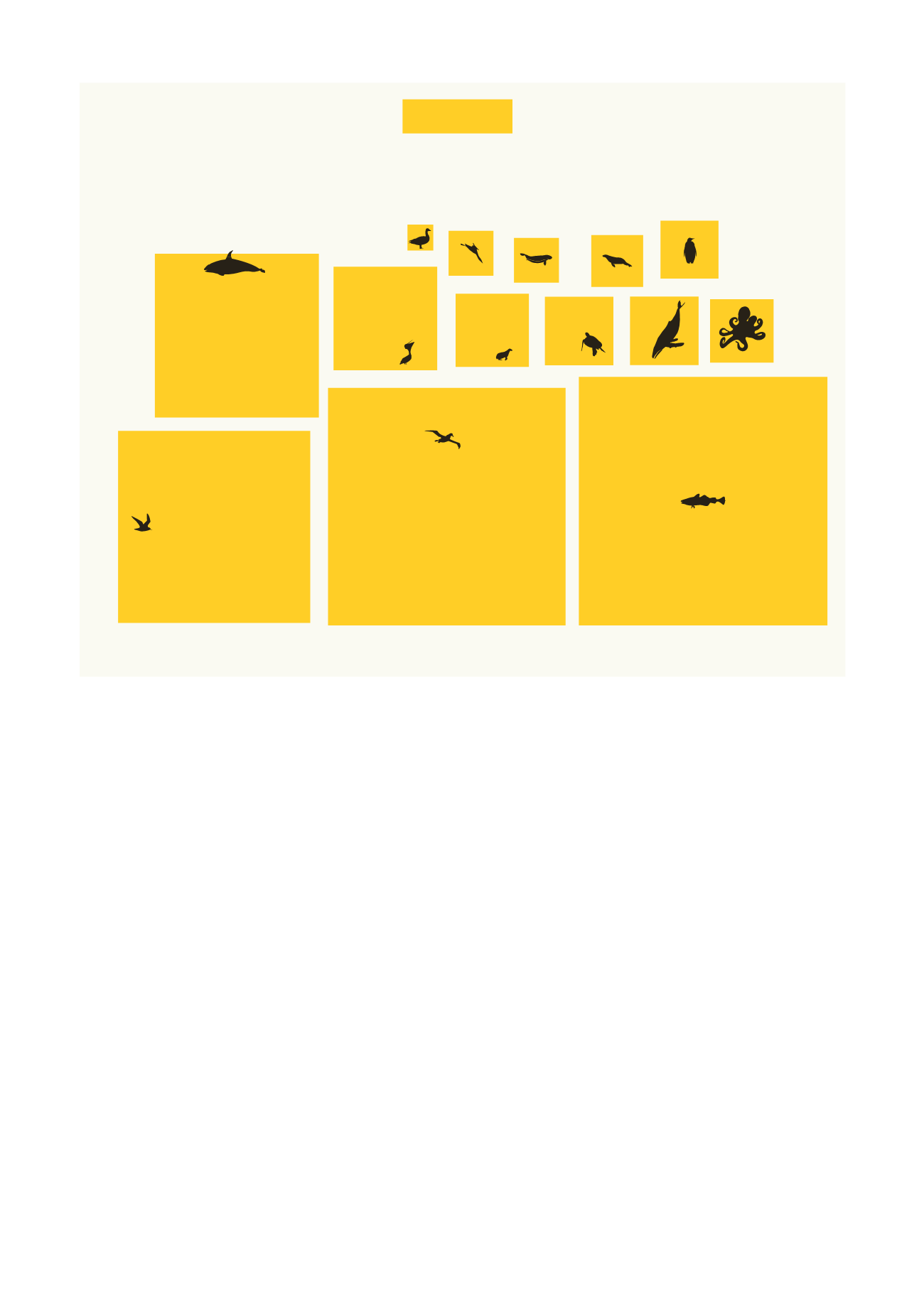

16
Marine Litter
Vital Graphics
A recent review of microplastics as a vector for chemicals
found that the fraction of organic chemicals absorbed by
plastics is small compared to other carriers of chemicals
in the ocean (these include water, dissolved organic
carbon, black carbon and biota; Koelmans et al., 2016
and references therein). The ingestion of microplastics by
marine organisms is unlikely to increase their exposure to
organic chemicals (Koelmans et al., 2016) but the plastics
themselves also release chemicals as they degrade,
increasing the overall chemical burden in the ocean.
Caught by plastic
Entanglement in debris is a more obvious and proven
risk to marine life than other impacts of litter, which
are still subject to debate. More than 30,000 cases of
entanglement (in 243 species) have been reported (Gall
and Thompson, 2015). Entanglement can cause a quick or
a slow death through drowning, starvation, strangulation
or cuts and injury that cause infection (Laist 1997). Much
of the damage to organisms is caused by discarded fishing
equipment – so-called “ghost fishing”. It is a problem that
affects predominantly higher taxa organisms: whales,
turtles, seals, dolphins, dugongs, sharks and large fish.
For example, studies examining scarring on whales from
the Gulf of Maine indicate that more than 80 per cent of
right whales and 50 per cent of humpback whales have
experienced entanglement in fishing gear (Knowlton et
al., 2011; Robbins and Mattila 2004). In the North West
Atlantic, it is estimated that between 1970 and 2009, more
than 300 large whales died as a result of entanglement,
a significant proportion of them since 1990 (van der
Hoop et al., 2012). Northern Australia has a particularly
high density of ghost nets (3 tons per km of shore line
annually), which pose a threat to endangered marine
fauna in the region (Wilcox et al., 2015). It is estimated that
more than 8,000 nets collected between 2005 and 2012
could have been responsible for the deaths of more than
14,000 turtles (Wilcox et al., 2015). Ghost fishing entangles
species other than those targeted by the fishing gear; it
also results in impacts to the targeted species, as the gear
continues to trap and catch them without harvesting.
Smothering and other damage
Much of the marine litter entering the ocean is initially
Dugongs and sea cows Marine ducks Penguins Turtles Whales True seals Divers Eared seals Toothed whales Gulls, skuas, terns and auks Fish Invertebrates 3 3 1 4 7 7 8 16 40 55 84 92 5 6 16 Albatross and other Procellariiformes Pelicans, gannets and boobies, tropicbirds Number of species with documented records of marine debris ingestion Source: Kühn, S., et al., Deleterious E ects of Litter on Marine Life, in Bergmann, M., et al., Marine Anthropogenic Litter, Springer, 2015 Plasticized animal species - Ingestion (60%) (7.7%) (27.8%) (59.6%) (23.9%) (21.1%) (100%) (0,28%) (>0,001%) (61.5%) (60%) (61.5%) (53.8%) (39.6%)IMPACTS


















